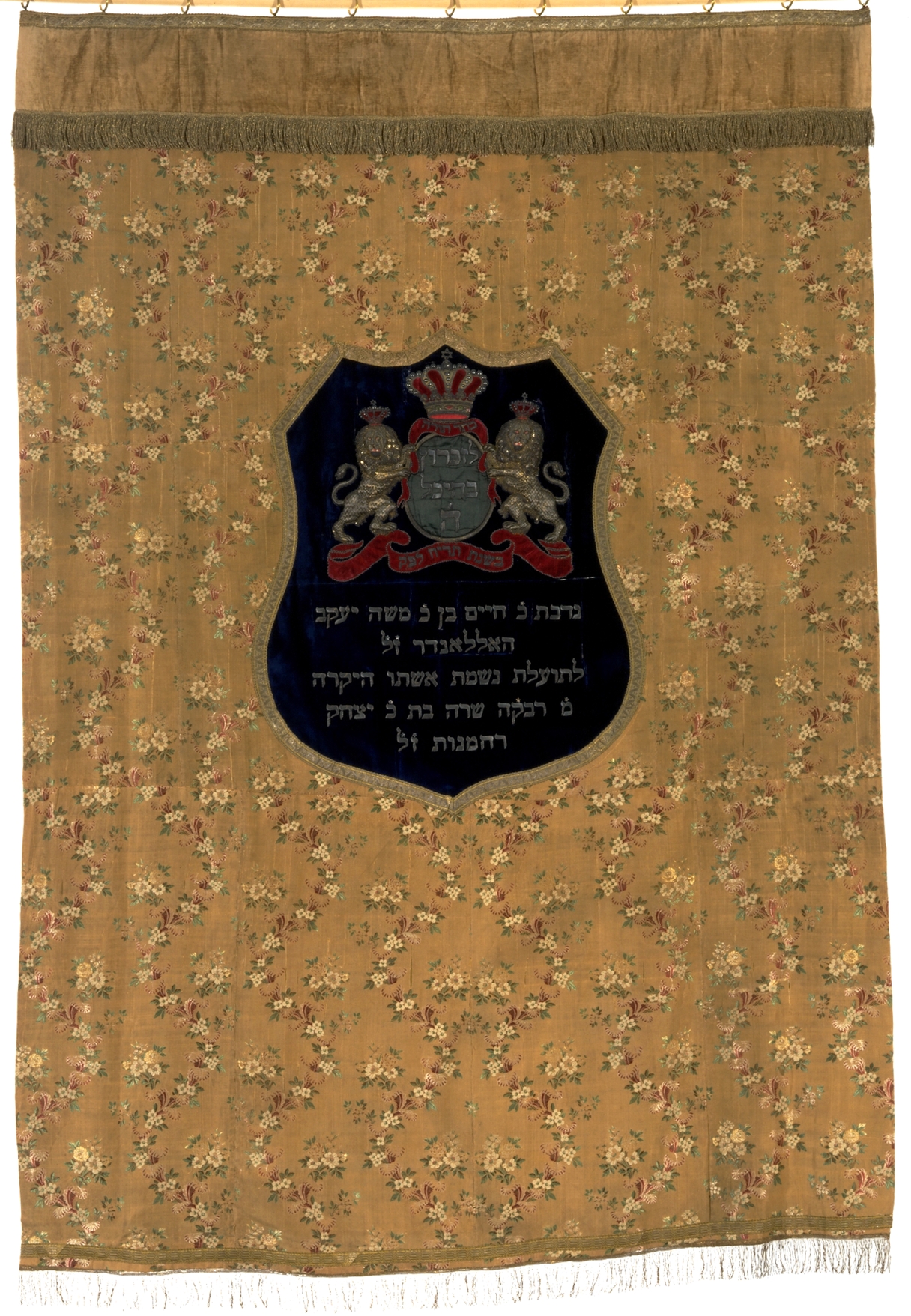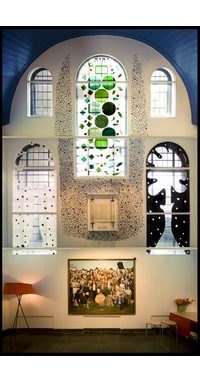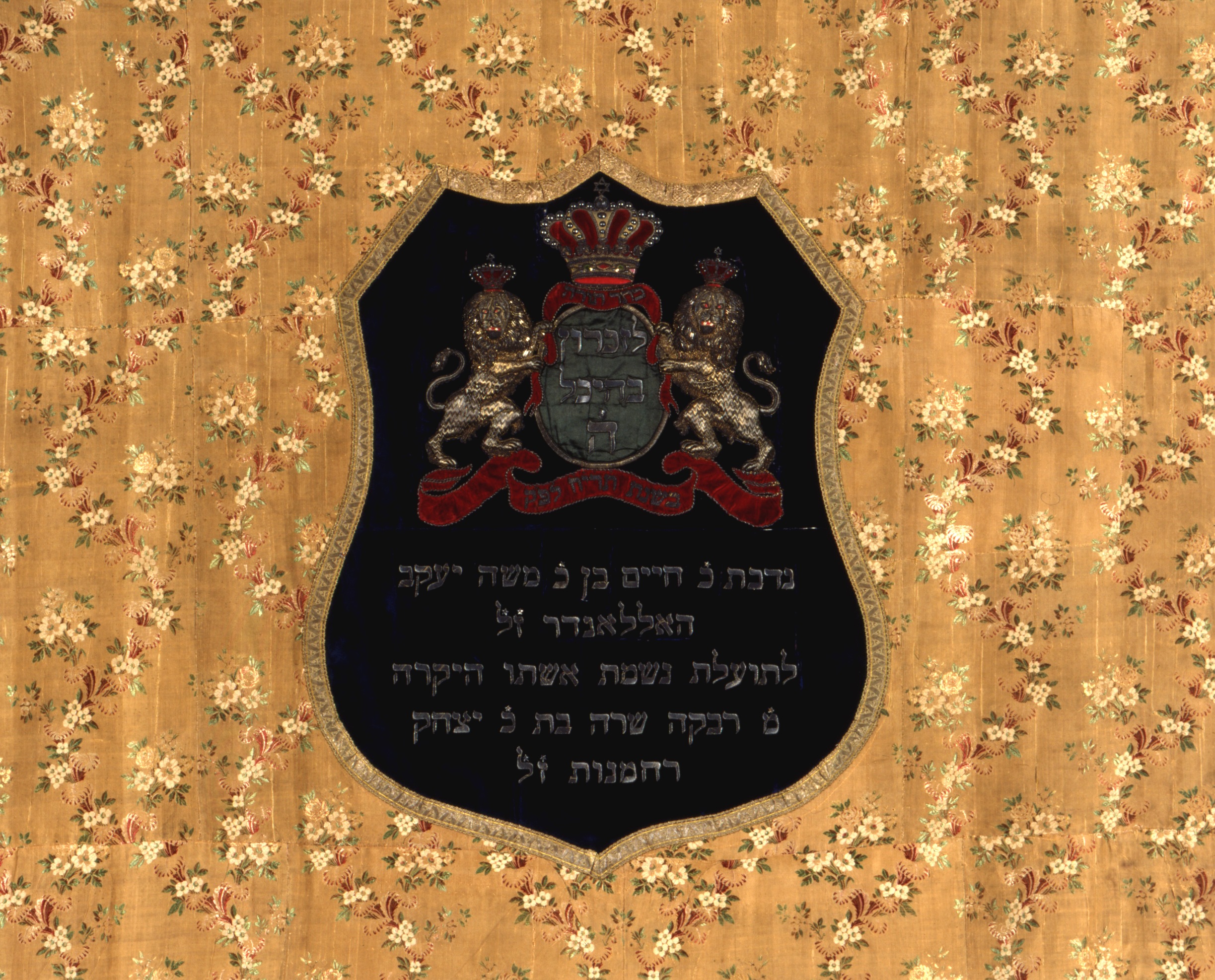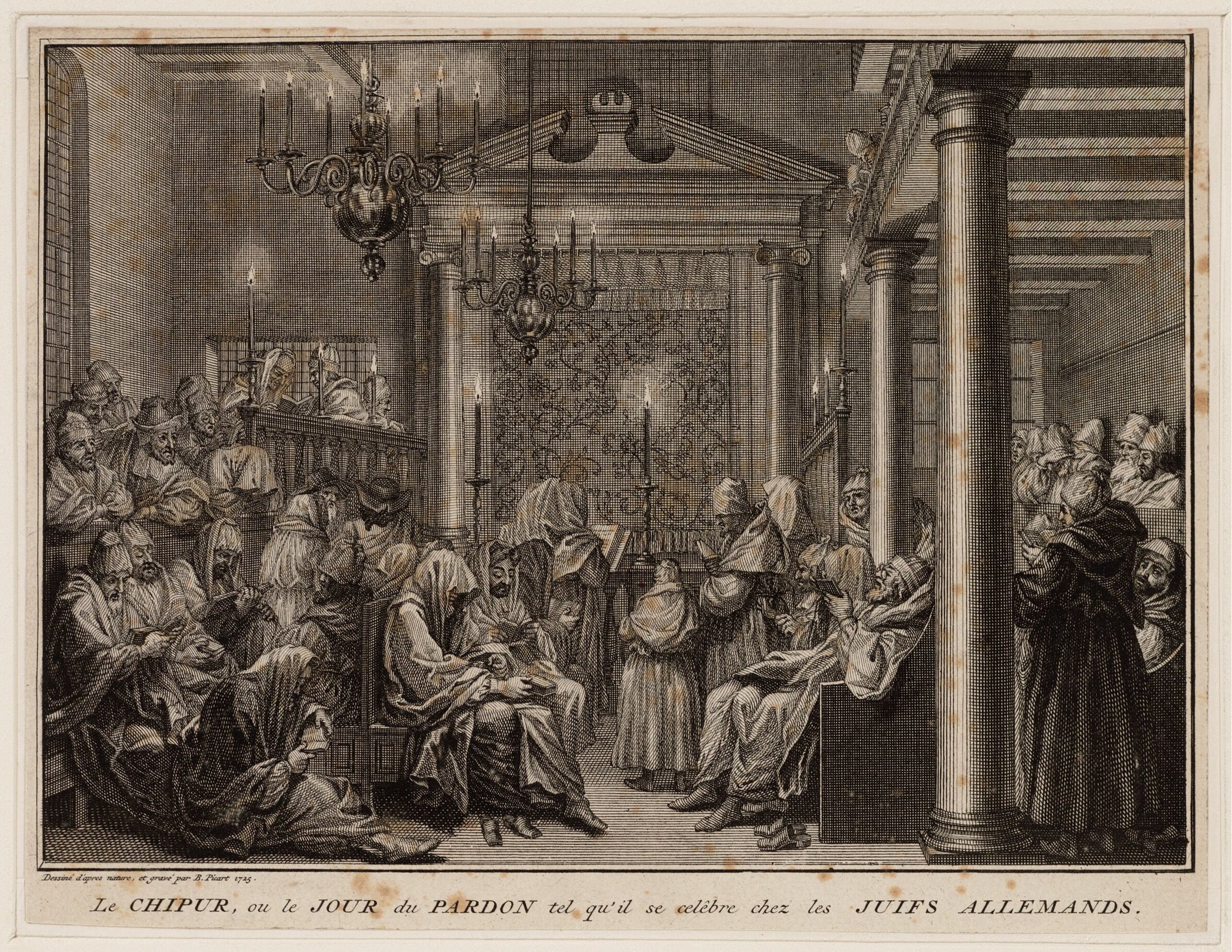In memory of his wife Rebekka, Chaim has a Torah curtain made, which is used in the synagogue during the Festival of Booths.
Location
Obbene Sjoel
Nieuwe Amstelstraat 1
Type
Synagogue
Religious community
Former Ashkenazi community, now Jewish Cultural Quarter
Object
Silk Torah curtain with a velvet mirror (the shield-shaped part in the centre), decorated with metal thread and fringes
Maker and date
Maker unknown
ca. 1860
Visit
Not available for viewing on location
Some religious objects begin their lives as everyday items. They are made up or reused in the synagogue and thus take on a religious function. Such is the case with this ochre-yellow silk parochet by Chaim Hollander (1817-?). Chaim Hollander was born in 1817 in The Hague. Not much is known about his life. He is a jeweller and lives in Antwerp for a while before coming to Amsterdam. Chaim marries Rebekka and they prosper financially. Indeed, in 1857, the couple exchanges a house on Muidergracht, in the poor Jewish quarter, for one on Keizersgracht. Unfortunately, their life together came to an end that same year, as Rebekka died. In memory of her, Chaim donates this Torah curtain to the Ashkenazi community. As can be seen from the small seams just below the shield-shaped middle section, a dress of beautiful fabric was made up for the curtain. Could it have been a dress of Rebekah? Unfortunately, we do not know.
Parochet
Veil or curtain in front of the ark in the synagogue, containing the Torah scrolls.
Chaim left for Paris in 1863, but the curtain remains in the Obbene Shul. This small synagogue was built in 1685. The Great Synagogue from 1671 soon became too small, as many Jews from Germany and Eastern Europe came to the Netherlands, mostly fleeing persecution. The new synagogue gets its name because it is located in the space above (‘obben’) the meat market. Before the synagogue was built in 1685, a wooden meat hall stood on this spot behind the Great Synagogue. This was demolished for the new building that can accommodate 390 people. The synagogue was intended for men of lower social status. Indeed, many Ashkenazi Jews were poor and lived in poor conditions in the Jewish quarter, near today's Waterlooplein. The Obbene Shul is part of the synagogue complex that has housed the Jewish Museum since 1986. Today, Jewish Museum Junior uses the building.
Synagog complex
Is formed by the New Synagogue, Great Synagogue, Obbene Shul and Dritt Shul of formerly the Ashkenazi (Ashkenazi) Community. The buildings were closed during World War II by order of the Germans. In 1954, they were transferred to the Community of Amsterdam and restored. In 1974, they were purchased for the symbolic sum of one guilder by the Jewish Historical Museum and furnished as a museum. Now they are part of the Jewish Cultural Quarter.
Lisa de Goffau
Collection curator Jewish Cultural Quarter
Last edited
December 04, 2024
Parochet, maker unknown, Netherlands, 1858, silk, velvet (mirror), metal thread (decoration and fringes) and cotton (lining), 272 x 185 cm. Jewish Museum collection, on loan from the Nederlands Israëlitische Hoofdsynagoge Amsterdam.
Parochet (detail), maker unknown, Netherlands, 1858, silk, velvet (mirror), metal thread (decoration and fringes) and cotton (lining), 272 x 185 cm. Jewish Museum collection, on loan from the Nederlands Israëlitische Hoofdsynagoge Amsterdam.
Celebration of Yom Kipur (Great Day of Atonement) in the Obbene Shul, Bernard Picart, Amsterdam, 1725, engraving, 16 x 21 cm. Jewish Museum collection.
Cohen, J., J. Kröger en E. Schrijver, eds., Gifts from the Heart: Ceremonial Objects from the Jewish Historical Museum, Amsterdam (Zwolle, Amsterdam 2004).
Swetschinski, D., J. Cohen en S. Hartog (et al.), Orphan Objects. Facets from the Textiles Collection of the Joods Historisch Museum, Amsterdam (Zwolle, Amsterdam 1997).








